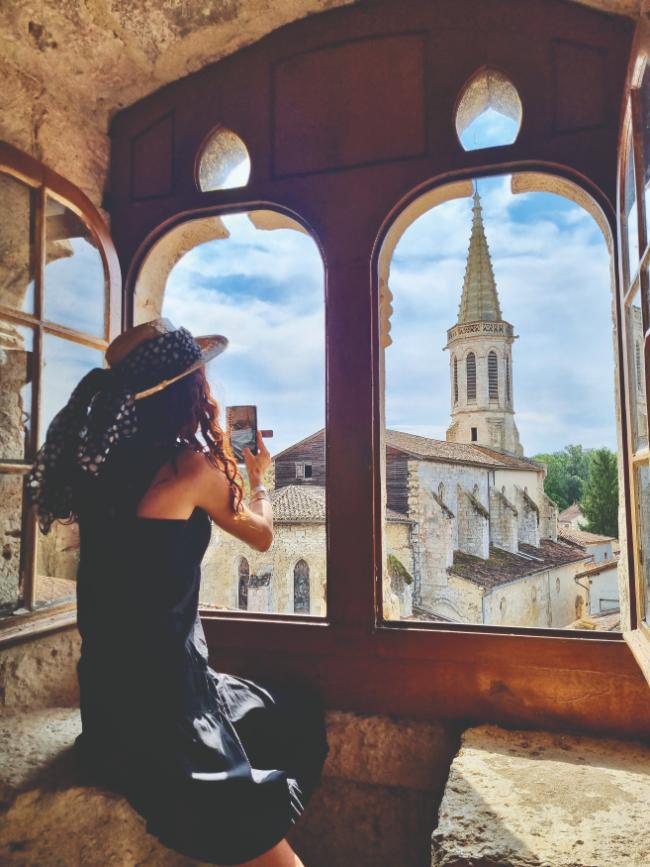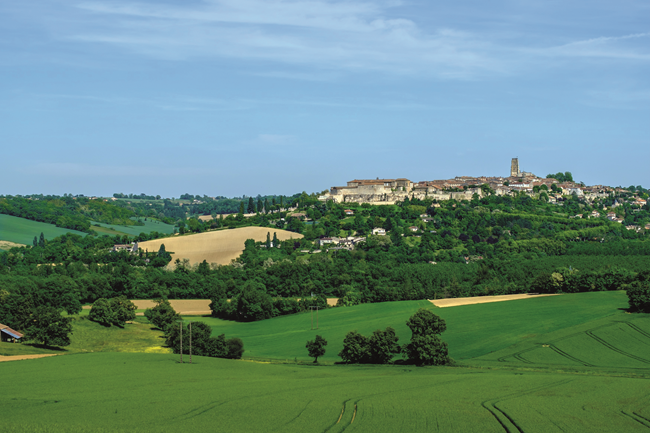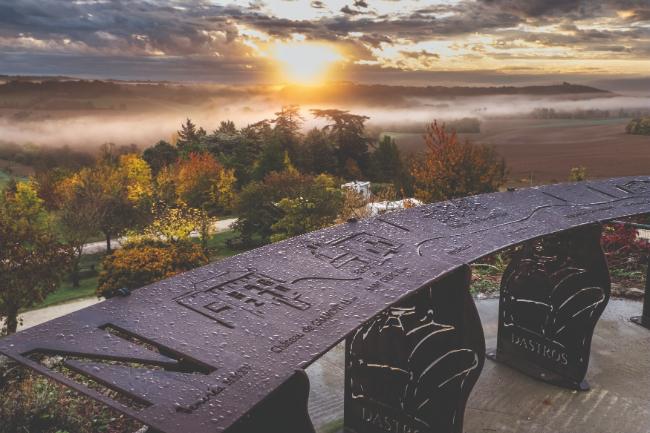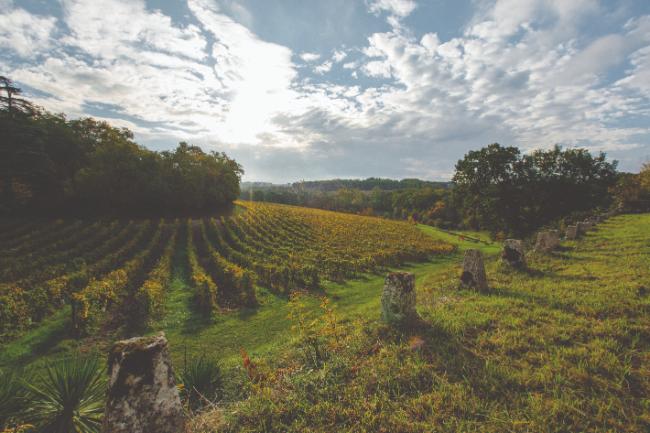Slow Travel: Tradition and Tranquility in Gers
7 min readLive and learn on a tour of the eastern Gers, in south-west France, combining great food, dazzling architecture and idyllic villages.
One of the many reasons that France is such a beloved tourist destination is the feeling that in certain rural corners, time has effectively stood still for what seems like centuries. Not in terms of technological advances, of course, but rather in the untainted architectural heritage; in the unhurried yet bustling markets on the same village squares as 200 years ago – still selling largely the same locally produced, simple delights like cheese, bread and fruit; and in unchanged attitudes to a deep-felt appreciation, and indeed protection, of a slower pace of life and of the traditions at the heart of a region’s identity.
My latest Slow Tourism jaunt in Occitanie ticks all the above boxes, and takes me to the eastern flank of the Gers department – about an hour west of Toulouse and a short drive to the east of its prefecture, Auch. This is an ideal place for ‘steady as you go’ touring.
I visit with the vestiges of late summer still on show, making this laid-back Gascony at its very best: idyllic, photogenic villages for a pause (Plus Beau Village Sarrant is a must); stop-and-buy farm shops seemingly along every road, most of which bisect rolling valleys patchworked with crop fields and copses. Every so often, a wall of piled-high hay bales obscures the view of a pretty Gascon farmhouse, while the last of the summer fruits plus Armagnac producers’ bottled goodies are flagged up on handmade panneaux (signs) pointing down narrow country tracks.

Sarrant © CDT Gers
The bells, the bells!
My weekend begins with a Saturday morning stroll through pretty L’Isle Jourdain’s vibrant market, set across two squares. I resist the temptation to scoff a piece of croustade – the crunchy, pastry-topped apple pie so beloved here – and head to the 19th-century grain market (listed as a Monument Historique) which since 1994 has housed the European Museum of Campanile Art. This most remarkable paean to the history of bell-ringing and time-keeping houses umpteen priceless examples of forged cloches (bells) and centuries-old timepieces. In the affable company of guide Bruno Delfino, I take a deep-dive into the bronze bell-making process, and take on board some impressively recountable dinner party statistics: such as how the battant (the clapper that bangs against the bell interior to make the sound) must be 1/20 of the weight of the bell for sonic perfection. There are six permanent exhibition areas (the museum counts a thousand objects from five continents and four millennia) and a large space devoted to temporary displays.
My personal highlights are the Carillon of the Bastille, the monumental clock saved from pillage after July 14, 1789, and finally secured for posterity by the French state in 1989; and the unique collection of intricately hand-carved subrejougs – wooden objects attached to the top of cattle yoke to help the cow maintain balance. I’d never even seen one before, let alone learned about their place in the rural heritage of the Midi, In short, I cannot recommend this museum highly enough as a place to learn about subjects which are perhaps not usually on one’s cultural agenda.
The sound of bells still harmonising in my ears after an impromptu ringing display from Bruno, I head up the D654 for a lunch stop with a heart in the delightful and surprisingly tranquil for a Saturday lunchtime (market day is Thursday) central place at Cologne. Le Comptoir des Colibris provides a winning combination of great food and considerate employment policy based on social inclusion. The Mousquetaires salad, named in homage to D’Artagnan and his swashbuckling pals and featuring iconic treats such as duck gésiers and slices of magret, is my Gascon go-to. This restaurant solidaire provides vulnerable unemployed people with workplace training so lucky patrons can simultaneously eat well and help others.
Good for the Gousse
My next stop, on the outskirts of Saint-Clar, could not better typify farming life in rural Gers. The fabulous Maison de l’Ail – run by passionate and very jolly allium advocates Marie and Francis Gamot – showcases the garlic producer’s work calendar, with a ten-minute video demystifying the growing, drying and plaiting process for the uninitiated such as I.
Meanwhile, pretty bunches of white and violet bulbs tempt buyers in the shop. This place offers a great little clin d’oeil (as the French would say) into an ancient profession – and Marie and – Francis are keen to stress that they welcome campervans to stay on their land. By mid- afternoon I was ready to head into Saint-Clar, a gorgeous village with the rare distinction of two arcaded squares and two separate historic centres. The first, with low, half-timbered houses, was built early as the 10th century around the old church; the second formed as part of the grid-format bastide revolution around a main market square. The English angle is strong: the village was founded in 1289 by Edward I, King of England and Duke of Aquitaine!
The one unmissable cultural draw in Saint-Clar is the Musée de l’École Publique, a back-in-time journey to French school days of yore, housed in the village’s original primary school. The rich collection of school and teaching materials, sound accompaniments, portrait galleries and period photos, with many interactive elements for today’s youngsters to enjoy, goes beyond nostalgia to present social context amid the evolution of public education in France. The classroom, styled with original furniture, chalkboard and maps on the wall, is truly evocative and will bring back strong memories for many, no matter which country they grew up in.
With a few charming boutiques and café/bar terraces, Saint-Clar is a lovely place to sit and people watch. Croqla Vie on place de la Maire winningly combines some fashion rails and décor items with great dine-in and takeaway options. As it fortuitously turned out, the restaurant would be providing a super tapas box for my evening and overnighter at the magnificent maison d’hôtes on the edge of the village, La Mirande de Saint-Clar. After a warm welcome and cold beer with genial Belgian hosts Hilde and Filiep, we talked about the property’s renovation, a masterful job that will have anyone who dreams of a French hideaway scouring the pages of (France Today’s sister title) French Property News pronto!

Lectoure © CDT Gers
Ways of the grape
The next day begins with a stroll around the sublime garden and vines of Château Arton – just outside Lectoure with host and all-round wine and Armagnac brain Alain Massabie. This Haut- Armagnac domaine crafts Côtes de Gascogne wines and serious Armagnacs.
Continuing the ‘learning’ theme of my slow tourism trip, Alain patiently explains to me the Armagnac distillation process (single instead of the double one of Cognac) and reveals the major challenges facing winemakers, such as climate change and mildew. He also reveals the tricks that winemakers employ to get the best from their vines. He points to a speaker in a vineyard that emits, a few times a day, modulating frequencies through infrabass… learn more of this sonic sorcery with a guided tour and tasting!
In Lectoure, I enjoyed a white linen lunch (le Menu de Saison, €44) at the immaculate Le Bastard (stop sniggering) hotel-restaurant – during which I demolished their stunning speciality dessert of prune soufflé with Armagnac and accompanying ice cream in about one minute. It more than provided sustenance for a brief tour of this lovely market town.
I spy scallop shells on walkers’ backpacks everywhere – a sign that we are on the Chemin de Saint-Jacques de Compostelle pilgrims’ way – as I explore the journey-through-time architecture. From prehistory to being a Gallo-Roman city, then from being the medieval capital of the local Lomagne area to its gentrification in the 19th century thanks to tanning industries, this is an edifice-admirer’s paradise. The 12th-century Saint-Gervais cathedral is majestic – if you can, explore the wonderful collection of ecclesiastical treasures and, upstairs, the 17th-century cupboard for priests’ robes – fascinating! Lectoure is vibrant even on a Sunday, with plentiful cafés, boutiques and local produce shops, plus there’s a ‘brocante village’, a magnet for seekers of second-hand bargains.
Leaving Lectoure, there’s one final stop just outside town. Tommy’s Parc (entry just €3 per day) is a brand new water activity centre on an immaculate clearwater lake with sandy beach. While its inflatable assault course, paddleboards and canoes are perhaps aimed at the nimbler adrenaline seeker, in the interests of my seriously slow tourism ethos, I opt for a leisurely pedalo jaunt, dreamily reflecting on Gers’ rich rustic offerings as I go.
GERS ESSENTIALS:
GETTING THERE
Fly to Toulouse airport from many UK airports and Paris. L’Isle Jourdain is just 25 minutes away on the N124.
WHERE TO STAY
La Mirande de Saint-Clar, a high quality maison d’hôtes with pool and fine breakfast. Prices from €105 per night.
WHERE TO EAT
TOURISM CONTACT
From France Today Magazine
Lead photo credit : Vue aérienne de Lectoure © CDT GERS, N. BACHOUX, G. VILMINOT, C. LAFFONT, S. DAUDIRAC, J.L. PEREIRA
Your email address will not be published. Required fields are marked *





